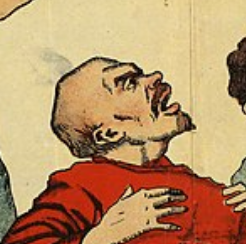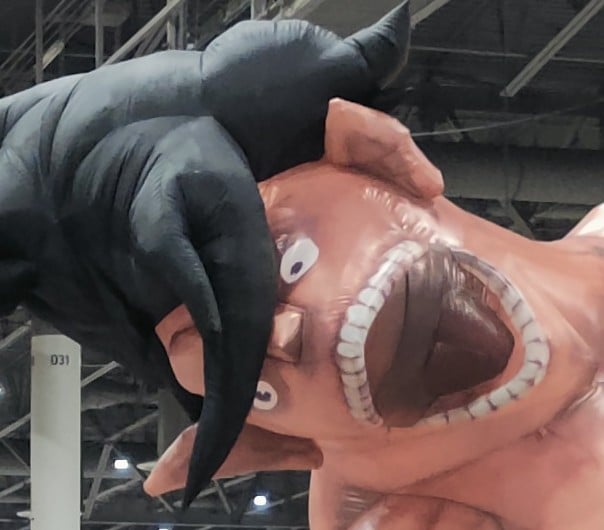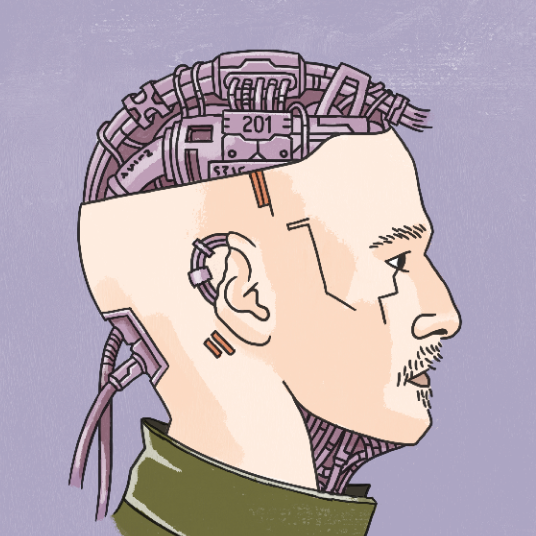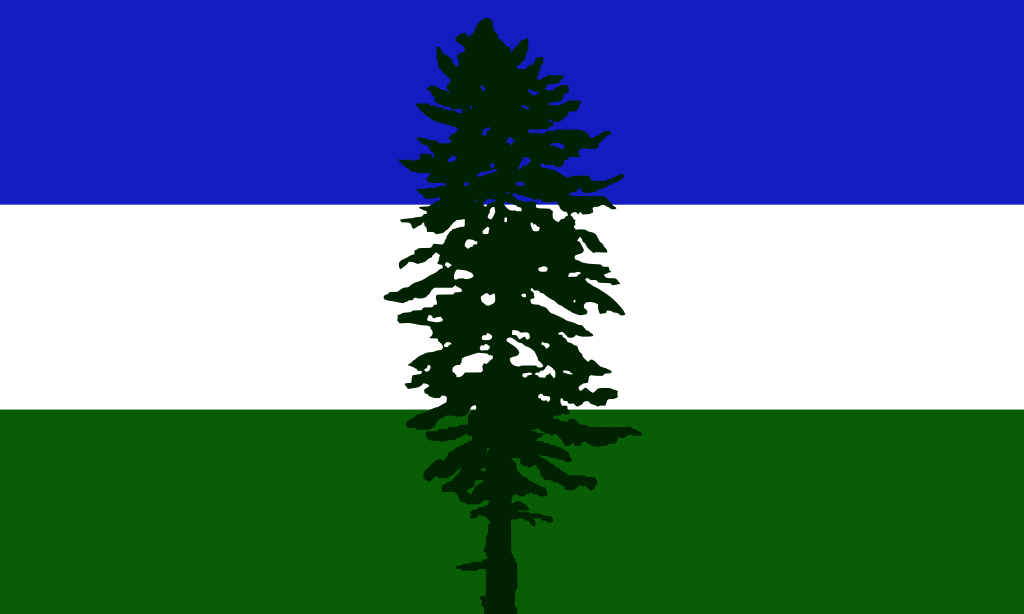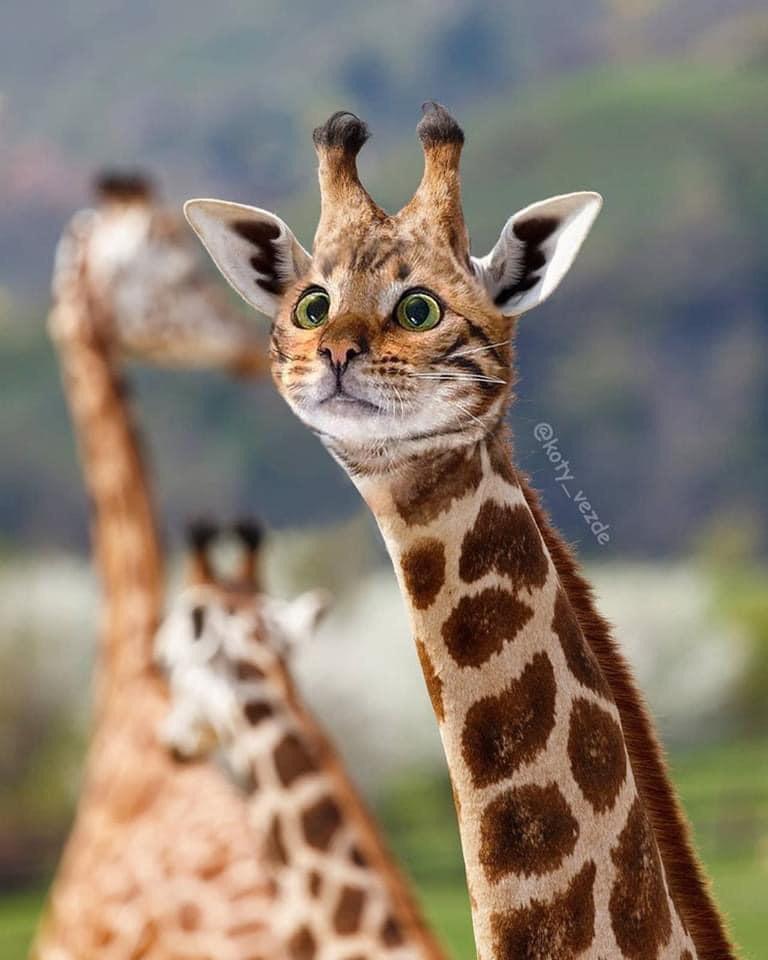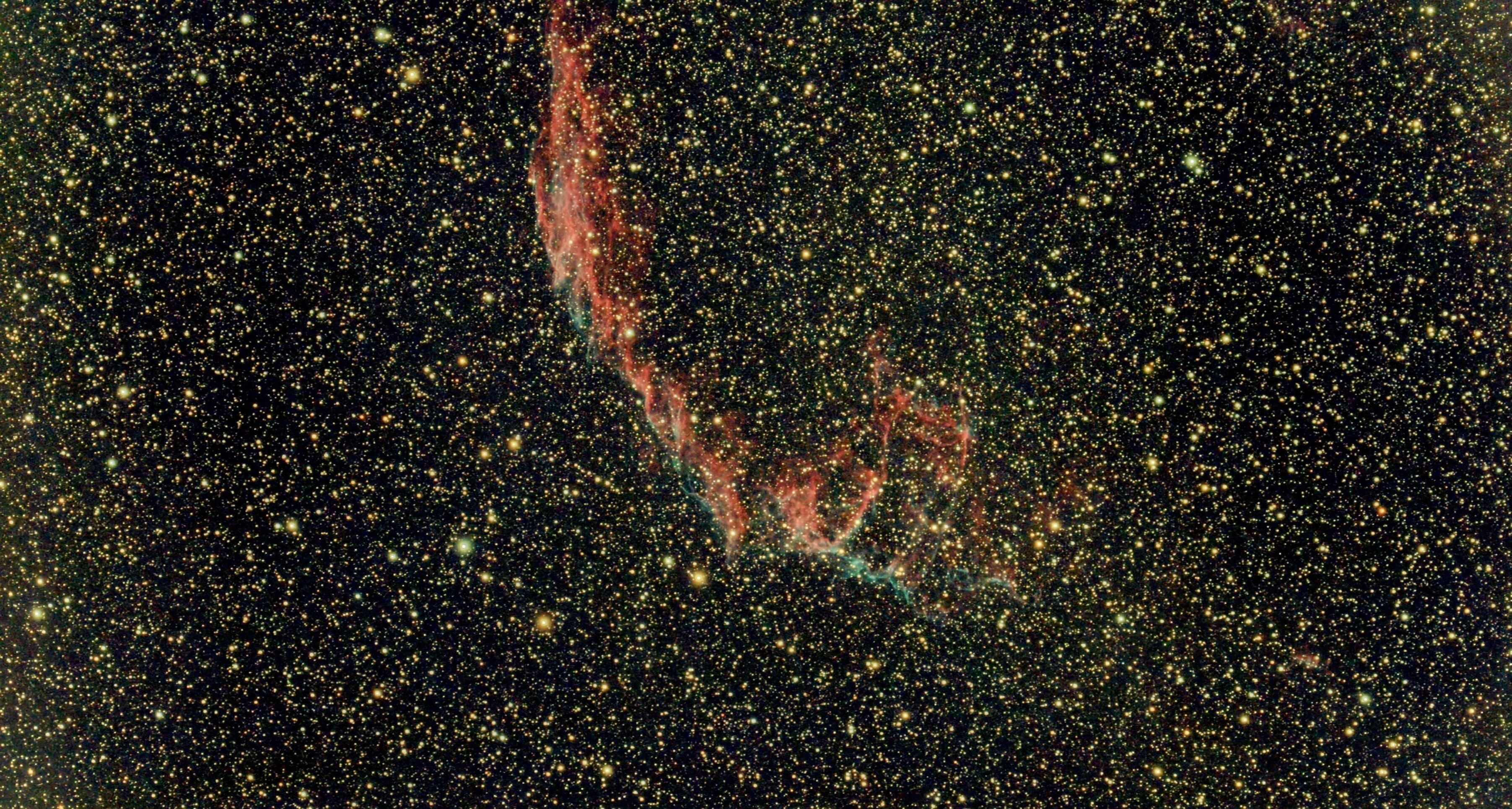Check out Sioux Chef in Minneapolis. That one is pretty good!
I’ve actually been to a native american restaurant. It was on a reserve. They served buffalo burgers. It was fucking delicious.
To divide indigenous people with our current borders is anachronistic and not useful.
For example, Aztecs migrated from the current United States (or close, as there’s no consensus) into Mexico. I bet they carried on culinary traditions. If so, dishes from Mexico City are an example of native (native to their first and their second land) cuisine.
Yaqui, Pima/Pima Bajo, Kickapoo and other groups lived and live both in the U.S. and Mexico. So, again, northern Mexican dishes might be “Native American” dishes.But that notion alone is problematic as it implies the indigenous peoples’ food was and is more similar than it actually is. We can have Quechua cuisine, Mayan cuisine, Cherokee cuisine, but grouping them up for a restaurant would be as easy as trying to open an “East Asian restaurant” or a “European restaurant”. What to put on the menu? Lol.
I hope I’m not pedantic. I just don’t agree with the divide of the indigenous people by our current nations, and I’m debating the air over here.
Same shit for white people, British food vs English vs USA etc
Here’s a couple of NPR stories about indigenous people running restaurants that reflect their cultures:
The Sioux Chef is excellent and deserves all the praise.
I feel like this post doesn’t give enough credit to Europeans who also killed millions of native Americans before the US was even founded.

Distinguishing between European settlers and (US) Americans feels a bit silly
Yeah but it helps make America look better and that’s what counts
Yeah as he said. 500 years, the us is bearly above 100 years old.
The US is almost 250 years old by now, but your point still holds true.
The US is almost 250 years old, but it’s bearly 100 years old. The bear shadow government took over in secret in 1925.
It WAS the oldest republic standing (not counting San Marino)
Ah, to be a teenager again
There was a comedian who had a routine that went something like “my sister’s husband is German. Whenever he visits the US, he says that you just can’t get good bagels in Germany. I said, “and whose fault is that?” “
Why don’t we see any restaurants that make a big deal about cooking buffalo?
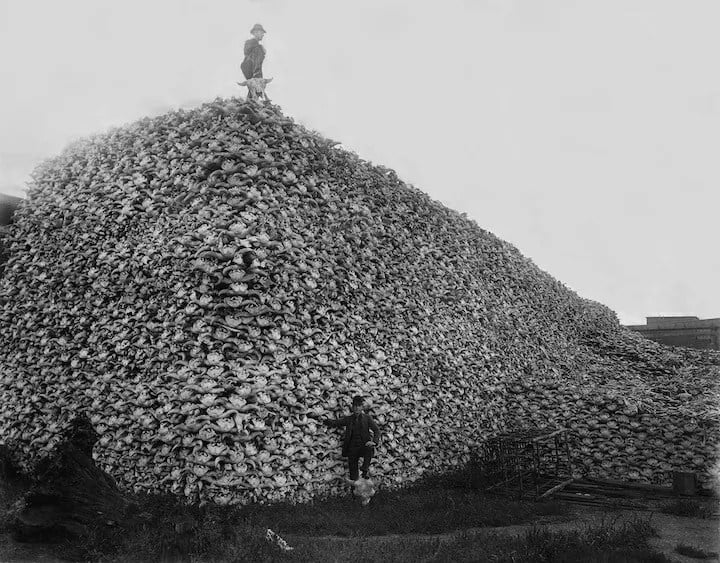
Oh… Right.
Proud boys.
I’ve always heard about this buffalo skull pile, but I didn’t actually look at a picture of it.
And damn, that is striking to see so many dead buffalo in one place under the heel of colonialist scumbags. Thousands upon thousands…
Lots of restaurants around me have Buffalo wings on the menu.
Yeah they were domesticated and bred smaller and smaller, dang shame. Their wings used to be the size of a mans arm.
And it’s made them aggressive, unlike the common house hippo.
Quick clarification…
Buffalo will fucking kill you.
Bison will also kill you, but they live in North America.
Bison also live in Europe, and I’m guessing they’ll also kill you.
Restaurants near me sell buffalo meat, like buffalo burgers, steak, etc. You can also get it at the grocery store, and it’s basically leaner beef.
its a revival but its a very long way off
I’ve seen bison burgers on the menu at a few local restaurants
Yeah, the reintroduction of buffalo to America is the single most successful repopulation effort in history. Buffalo were nearly extinct in America. To start the reintroduction efforts, they had to buy a few breeding pairs from private owners who had captured them for their ranches. If I remember correctly, every buffalo in modern north America came from that group of only 3 bulls and 9 cows. And now the buffalo population has resurged to the point that they’re not even on the threatened list anymore. Their population will never reach the same point that it was at its peak (c.1700, there were an estimated 29 million buffalo in North America), but they’re at least not in danger of going extinct. They reproduce relatively quickly, and babies are likely to survive, so herds grow relatively quickly if left unmanaged.
The issue with buffalo burgers (and the reason they’re not in more restaurants) is that buffalo are hard to farm commercially. They make bad animal husbandry candidates, because they’re extremely territorial and get aggressive towards people. So farming them is something that needs to be done with a lot of caution, and buffalo farms likely won’t ever reach the same kinds of sizes as modern cattle farms.
Given the climate impact of farming meat its probably for the best that they can’t be farmed as easily. And yeah, I’d expect most species on Earth reached a peak before I was born and won’t recover for at least decades after I’m dead, if ever.
Yeah farmed bison is certainly a specialty meat, but not a rare one. And yes, wild is an endangered species
Iirc a lot of the farmed bison is from bison that we hybridized with cows. So not technically the same as wild bison
That’s true, although some groups are trying to preserve non “cattle ingressed” bison. Like these guys: https://americanprairie.org/
That’s actually really cool! Thank you for sharing a link!
That makes sense. I’ve heard you can fence in bison only if they don’t care to leave.
Yeah there’s a small (5-7 bison) farm near me that uses telephone poles as fence posts, with metal fencing wrapped around 12 feet up (4m).
It has serious Jurassic Park vibes
They offically went extinct. I think there’s efforts now to reintroduce them and get wild populations happening again, but some time in the 80s they were declared extinct.
Antelope Island in Salt Lake, Utah has a herd of bison that are carefully managed. There’s a restaurant on the island as well that serves bison burgers.
My god that is disturbing.
Would have been a very awesome source of beef if properly sustained.
Not really, buffalo are notoriously difficult as livestock. They’re stubborn, defensive, and enormous. A buffalo is more likely to bust any fence before it can be domesticated. Cows on the other hand are pushovers.
I meant as game really, kind of like deer. Permits and such for hunting. But I appreciate your comment as I did not know any of this.
You can get them, but it’s not very fun since they’re confined to certain regions and are super easy to kill. There’s a reason they nearly went extinct…
There’s something to be said for a wild source of meat.
Migratory herds disperse seeds and fertilize soil with their manure, while cutting back on overgrowth without overgrazing.
What happened there
Buffal-oh…
Also, a lot of their descendants were forced into re-education to replace their cultures with settler cultures. A practice even still ongoing.
I remember when this came up a few years ago on Twitter. There are First Nations restaurants, most (white) people just don’t go to them and where they are. Yes there are not a lot, it would be much better if there was more. The reason there isn’t is because of colonization and genocide.
But we also have to be careful because presenting a minority group as already extinct exists to help continue the perpetuation of the genocide. As Judith Butler describes.
An ungrievable life is one that cannot be mourned because it has never lived, that is, it has never counted as a life at all’
There is a surviving first nations food culture that doesn’t care whether Patrick Blumenthal has eaten it or not.
Also First Nations food has been heavily assimilated to into many cultures food. Mexican Food, Peruvian Food, etc When people eat these foods they don’t think of it’s relationship to First Nations, but there’s a connection.
Finally stuff like corn, tomatoes, potatoes all of this food that is widespread everywhere is from North and South America and only hits Europe and Asia in the early modern period. What is and isn’t a certain cultures food is not static but subject to forces of history.
There’s a native restaurant near me that is kinda like the equivalent of Chipotle for American Indian cuisine, and it’s fantastic. The owners are members of the Osage Nation and have had a few restaurants since the 90s. Really happy for them that they recently expanded to also have a food truck and catering business, as well as a little satellite location at a nearby ski mountain.
I can’t do much to help undo the genocide and cultural erasure, but I damn well take everybody I know to that restaurant.
If I knew of one, I’d totally try it out, but the reservations in my area are a bit out of the way, and I don’t see any obvious native restaurants.
"But we also have to be careful because presenting a minority group as already extinct exists to help continue the perpetuation of the genocide. As Judith Butler describes.
An ungrievable life is one that cannot be mourned because it has never lived, that is, it has never counted as a life at all'Thank you so much for this reminder; because of this, I have realised that this is a trap that my thoughts sometimes slip into. Hopefully I will be able to be mindful of it and check myself in future
Seattle has one and it’s delicious. We also have/had another food truck. There are pow wows in the area that serve the best salmon. They exist.
We’ve got one in Minneapolis too that’s good. They do exist support em.
The Pacific Northwest is the rare exception where some of the remaining tribes are still on or adjacent to their ancestral homes.
Best seviche I ever had was made out of geoduck and from a tailgate after doing a beach cleanup.

Massachusetts has a little bit of that as well, though in my experience, it only really means that the tribe members have more relaxed rules around regulated hunting/fishing seasons. Being able to fish out of season and harvest in closed shellfish beds, that sort of thing.
Is that similar to geodude
The snails I’ve had (only twice) were delicious. Is geoduck like that? They look like a big snail.
I farmed them for a number of years and they are surprisingly versatile. For the most part they taste like your standard manila, its just got a lot of mass compared to most shellfish. Preparation is everything and overcooking gets you a rubbery mass which isn’t so great.
I enjoyed slicing the siphon and deep frying them, but at that point it was less flavor than texture what with the beer batter and all, etc.
Off the Rez for the win. I hear Spokane has a good place, too.
I wish I had a chance to try ʔálʔal Cafe before it closed last year.
Off the Rez was exactly it. I wish I lived closer to it so I could go there more.
Was going to bring up pow wows. Great way to find Native foods, learn about culture and history, and for many, most of the proceeds go back into the tribes hosting the event.
It’s only like $10-$15 to get in too. A couple of hours worth of fun. The salmon is more, but worth it.
There’s a joint in a little New Mexico Town that has amazing frybread. I wish I could remember where. It was somewhere I stopped on a whim on the way through.
I’ve had the food truck at the Ballard breweries! The fry bread is amazing.
This got me in a rabbit hole and I got curious about what indigenous/Native American cuisine would be like because I genuinely didn’t know and came across a good list of indigenous owned restaurants as well as a bunch of new recipes to try, in case anyone else is curious.
https://www.afar.com/magazine/native-american-restaurants-in-the-us
https://www.tastingtable.com/1297689/native-american-foods-should-try-once/
Things we would call “Mexican” food are indigenous food. Mole, empanadas, certain types of salsa. We just call it something else. I mean, they had corn and tomatoes all the way up most of the U.S.
Surely it wasn’t all the same clear up into the US eastern seaboard though, right? Mexican (Aztec/Nahua) food is great and all, but I’m interested in what the natives in my specific part of the continent would’ve been eating, which here in Georgia would mean Creek and/or Cherokee cuisine.
The Mississippians were growing corn in the Midwest. I am sure it was grown in the East as well. When you have a domesticated plant that grows pretty much everywhere and is able to fulfill a lot of your dietary needs, it spreads and spreads. See wheat or rice. Or in the Andes, potatoes. Or taro in Polynesia.
Sure, I’m just saying If you want a version of “authentic” native American food a lot of what we call Mexican food is alive and well in the modern day. I’m sure cornmeal was a staple of a lot of the US before modern borders and we categorized it as central American food.
There would be a ton of local variety since a large number of different tribes and societies had varying access to local fauna and game, plus trade. Think of the variety we have from Canada to Argentina and that is likely a comparable range to the wildly different native populations. Food near the great lakes would be completely different from food in the tropics and completely different from the foods in the mountains of the southern continent with a ton of variety in between.
Kind of like the massive variety in the continent of Africa.
There’s Owamni in Minnesota. The food uses pre-colonial ingredients. So no dairy, eggs, wheat, etc. They also source the ingredients from indigenous farms
Edit: No chicken eggs
No eggs? Are you telling me no one ate one if the more nutrient dense foods or are you saying it just doesn’t make it into cuisine because eggs wouldn’t be common to people who didn’t farm birds?
The latter.
Owamni has fantastic food; the James Beard award was well deserved.
Chickens are an old-world animal, domesticated from the red junglefowl of Southeast Asia. IIRC there’s some possible evidence for chickens being taken to South America by the Polynesians, but they certainly didn’t become widespread in the Americas until the European colonizers showed up.
Maybe Native Americans ate the eggs of other birds that they did have access to, such as turkeys? But even if they did, it’s chicken eggs that are the ones easily commercially available in the quantities a restaurant would need, so…
What I think is fascinating is that there is conclusive evidence that Polynesians and Indigenous South Americans interbred.
But only once.
But only once.
I know, right? There are also a few bits of evidence for Polynesian contact in various places all up and down the coast, from Chile (Arucanian chickens) to California (Chumash canoes). But only a few.
Reaching the continent, I get.
Failing to reach the continent, I get.
But reaching the continent, making barely any (but not zero!) impact, and then noping out again? That’s just weird!
Ah yeah I should have said poultry/ chicken eggs. I looked on the menu and there are some duck eggs
More than that, we completely transformed the native ecology of places such that they’re nearly unrecognizable from what they once were. Native plants only occupy a tiny, tiny slice of the ecology that they used to, thanks to invasive introductions that came either accidentally or deliberately with livestock and agricultural imports. I know that in California, many of the plants the native people depended on are difficult to find anymore, and are almost never deliberately cultivated. We also took deliberate, calculated steps over decades to eradicate their cultures, and since very little was ever written down, it was largely successful.
In spite of all that, AFAIK there IS at least a Dine restaurant that they’re using to try and teach their own people and others about their traditional culinary and food-ecology practices.
So I almost stopped reading at “native ecology”. You do have a good point about deliberate destruction of what was there, but the American continent wasn’t in some kind of pristine natural state before Columbus arrived. The native peoples altered their environment to suit them. What we call corn today came from maize, but maize isn’t natural, either. Its closest genetic relation to a natural plant is one with tiny, inedible cobs. It’s not clear how they manged to go from that to maize.
Humans alter the environment around them to better suit humans. That doesn’t mean we have to be relentlessly destructive, but we always do it in some way. Narratives that native peoples were in some kind of perfect state of nature feeds into noble savage myths, and take away from their humanity.
But focusing on cultural eradication is a very good point.
Hey, yeah, you’re completely right. I definitely didn’t mean to imply that they lived in some unspoiled wilderness or that they didn’t believe in touching the wilderness like a lot of the colonial narratives suggest. I’ve been reading Tending the Wild by Kat Anderson, and it does a lot of work dispelling those myths. What I mean is that they had relationships with the ecology here; California native tribes knew where edible corms grew and how to cultivate them to ensure a good bounty, they knew when to expect and hunt migratory birds, how to sustainably harvest roots and leaves for basketry, how to harvest and use acorns from the various oak species here, and how to get food and shelter from incense cedar and sugar pine without killing the trees. They also knew how to tend these local ecologies to ensure that these plants and animals continued to exist as long-term and renewable resources. In fact, another book I’m reading, Braiding Sweetgrass makes the case that the plants that native people used fare worse without human intervention. While the tribes, at least as early European settlers knew them, were semi-nomadic (they would move between the valleys and the mountains depending on the season) rather than agrarian, they still cultivated and shaped the lands they lived on. They helped to shape and were also shaped by the ecology.
European and American settlers blew almost all of that away without even realizing it in many cases. In California, all it took was introducing grazing animals and declaring land private property.
To be fair, “native ecology” doesn’t necessarily mean “natural ecology.” A change from the native cultivated landscape to one left fallow and overgrown is still the kind of radically destructive change @conditional_soup@lemm.ee was talking about.
On a related note, it reminds me of this video about suppression of indigenous fire management practices and their consequences.
The indigenous people used to move giant rocks and make rock walls to corral giant herds of buffalo, right off the side of a cliff. Kill thousands at a time.
Some humans suck so much. Like this whole thread is a painful read, even as a random European.
Yeah. There’s also post contact/reservation foods and less accessible are traditional foods of people whose land was less actively stolen like the Alaskan Natives. I’ve had a bit of traditional Yupik food and it isn’t bad
imagine never having a fry dough experience…
FUCKING SAD
Indian frybread is good stuff, yeah.
“Most of them” is the understatement of the day. Our country killed nearly all of them.
It is truly staggering the extent of the destruction we caused on the natives to this land.
Wiki says 96% of them were killed. That’s something like 3.6 million humans were slaughtered.
And most all of their land taken.
It’s an injustice in this country that we don’t learn about it more and try to atone as best we can.
It’s worth remembering that most of them were killed by disease, and that the diseases travelled faster than the colonists. Europe had had centuries of people living in filthy cities where all kinds of diseases were constantly breeding. The survivors carried those diseases but were immune to them. As soon as they met the native populations, the natives were exposed to countless deadly diseases that were completely new to them.
Now, sure, the colonists went and tried to slaughter as many natives as they could, but often they’d get to a new native settlement and find it was mostly empty because everybody had already either died or fled. Who knows, the natives might have been able to put up a fight against the colonists if they hadn’t been so devastated by the diseases. I’d bet that the colonists just took all the natives dying as another sign that their conquest was blessed by their god.
The city of Cohokia was unrivaled in population on the continent until post-colonial Philadelphia about 800 years later, and by some estimates may have even rivaled contemporary London at its peak
There’s other native American cities being found hidden in the jungles of South America too.
The amount of history, stories and people that have been lost to the sands of time are incredible
Keep in mind that at the time London wasn’t all that big a city.
Cahokia is estimated at between 12k and 40k people. That’s a decent sized city for sure, but around the same time, Baghdad had a population over 1 million. Uruk in modern-day Iraq had 40k people at 3000 BC, and Ur hit 100k by 2000 BC. Rome and Alexandria hit 1 million 2000 years ago.
I think Tenochtitlan was more impressive, not only because of the population (estimated at between 200k and 400k on the day Cortez arrived) but also because of how the city looked, basically a city built into the middle of a lake. I still love to look at Thomas Kole’s visualizations of the city
By the way, if you haven’t read Cahokia Jazz, you should. It’s a fun crime story, set in a world where Cahokia didn’t fall, and where the independent native people are waging political battles to keep their freedom as Europeans claim the rest of the continent.
Of that 96% starvation and disease killed many/most. The USA absolutely waged genocidal campaigns against the various tribes but that 3.6 million includes other deaths as well.
shooting bison and smallpox blankets say hello
I mentioned starvation specifically because of the needless slaughter of bison.
We count that in the genocide
my point is it is completely fair to say white America killed the vast majority of the natives
whitewashingly pedantic to blame the gun and not the man pulling the trigger
Active or not, the Europeans and then the Americans caused the collapse of their civilization.
Imo all deaths are related.
Many weren’t intentional though. There was diseases spread initially by livestock that killed many of that 3.6 million.
Yes, there absolutely were intentional campaigns of genocide but a lot of natives just caught the flu and had zero defense to it. Nobody intentionally gave them the flu because many of these people never saw Europeans.
I have a suspicion that if it weren’t for all the disease the colonizers would have destroyed them anyway.
Also nobody intentionally made them deathly ill? Smallpox blankets.
You’re not wrong.
However, it is worth pointing out that the documented “smallpox blankets” stuff happened in the 1700s and 1800s, which was already a century or two after the continent had been greatly depopulated by diseases spread unintentionally.
Good point, I didn’t think about that.
Measles, syphillis, rubella, mumps, chickenpox even. chickenpox is especially dangerous to adults who never had it.
I never said nobody intentionally made others sick. I said most were not intentionally made sick. Most Natives died before even seeing Europeans.
smallpox being one, there is evidence smallpox originated from horses, which were abundant in europe, horses had thier own pox virus.(and going back further it came from an unknown rodent host.
“Guns, Germs, & Steel”?
Yes GGS= Guns Germs and Steel by Jared Diamond. OP already used the full name.
I guess my sticking point is, does it matter if it was intentional? Contact with Europe destroyed them from both accidents and outright malice. It was still genocide even if it was on accident, imo.
Yes, because at the time we didn’t understand germ theory. The livestock the spanish brought over introduced these diseases to other people via other animals.
If you supermegavirus X to your pet rat which lives in your house and who then gives it to a bird who then gives it to a different bird and eventually kills me are you responsible for my death? No you are not and that is how many/most died. They had zero contact with Europeans.
And who do we think caused them to die of starvation and sickness without access to the lands they could hunt or doctors.
And then there’s the whole gifting then smallpox blankets thing
There’s a good reason that Hitler’s concentration camps and Final Solution were inspired by America’s campaign against the native nations.
We pioneered race science too
I’m from Oklahoma and rarely saw a Native American. Saw an old guy in Chicago one time and we about shit.
I’ve been living in Oklahoma for over 20 years now, and I’ve still never seen a Native American.
That’s true, but it’s also important to not overstate it. Anti indigenous groups love to claim that since we basically wiped them out it’s a fool’s errand to give the survivors their reasonable demands like traditional lands and respecting tribal sovereignty.







